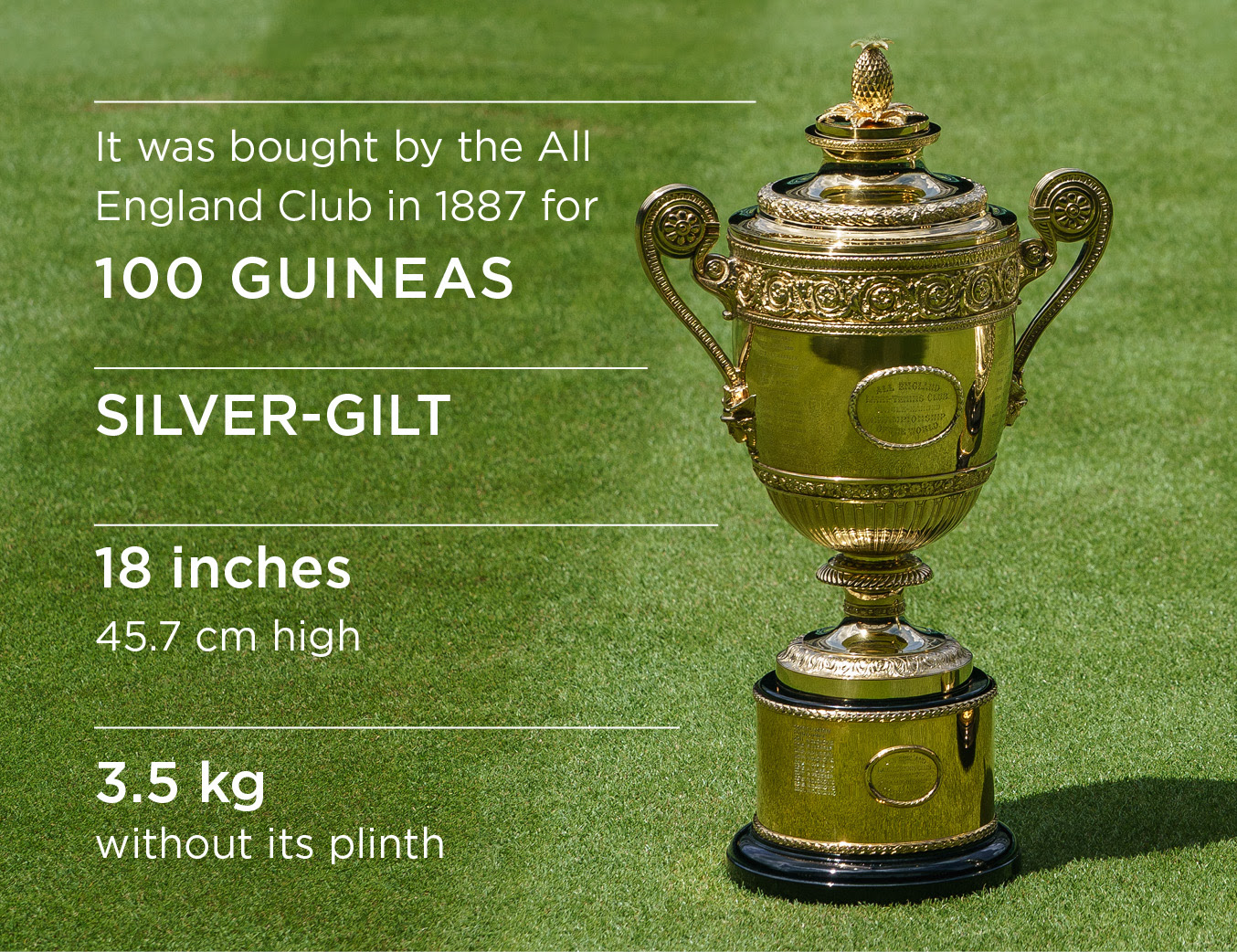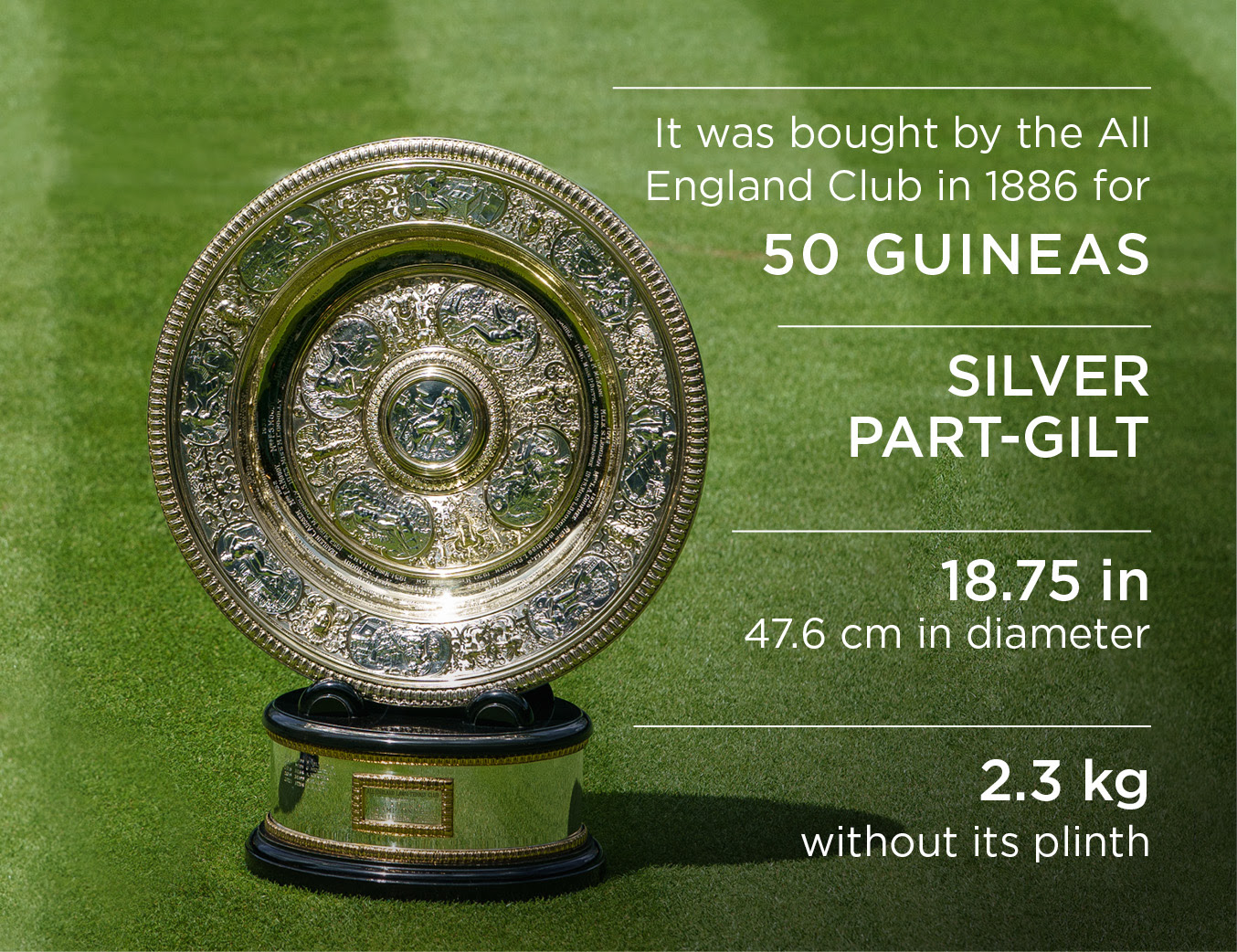Champions are made at Wimbledon, and all of our players will have their sights set on the most coveted prizes.
MEET THE GENTLEMEN'S SINGLES TROPHY
The first Championships was held in 1877 and the original silver trophy was called the Field Cup, donated by the Field newspaper.
It was decided that anyone who won The Championships three years in a row should keep the trophy. Remarkably, William Renshaw managed this feat twice, in 1881-83, allowing him to take home the Field Cup, and between 1884-1886, which permitted him to keep the Challenge Cup.
After this, the Club decided to create a perpetual trophy in 1887, which is the trophy we know today. The Champions receive a three-quarter size replica of the Cup bearing the names of all past Champions (height 13.5 inches).
The inscription on the Cup reads: "The All England Lawn Tennis Club Single Handed Championship of the World". Around the bowl are engraved the dates and names of the Champions. In 2009, there being no space left to engrave the names of the Champions, a black plinth with an ornamented silver band was designed to accompany the Cup.
MEET THE LADIES' SINGLES TROPHY
The official title of the Ladies' Singles Trophy is the Ladies’ Singles Challenge Plate, but it is more commonly known as the `Rosewater Dish’ or the `Venus Rosewater Dish’.
The silver salver was first presented in 1886, but was retrospectively engraved with the champions’ names from 1884.
The Rosewater Dish has been held aloft by many champions over the years. The trophy has the winners’ names from 1884-1957 engraved in the dish, but from 1958 onwards they were engraved on the reverse and from 2016 on the plinth on which the trophy sits.
The theme of the decoration is mythological. The central boss has a figure of Temperance, seated on a chest with a lamp in her right hand and a jug in her left, with various attributes such as a sickle, fork and caduceus around her. The four reserves on the boss of the dish each contain a classical god, together with elements. The reserves around the rim show Minerva presiding over the seven liberal arts: astrology, geometry, arithmetic, music, rhetoric, dialectic and grammar, each with relevant attribute.
The rim of the salver has an ovolo moulding. The Champions receive a three-quarter size replica of the Cup bearing the names of all past Champions (height 14 inches).